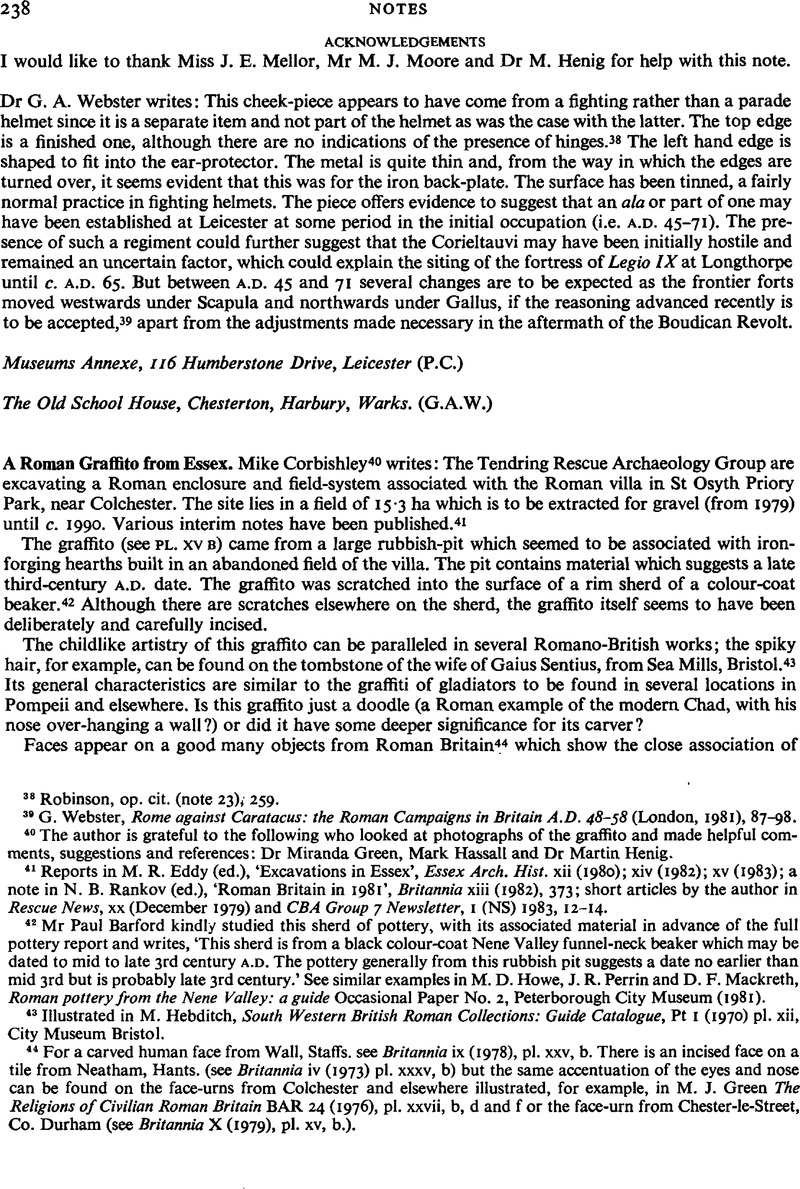No CrossRef data available.
Article contents
A Roman Graffito from Essex
Published online by Cambridge University Press: 09 November 2011
Abstract

- Type
- Notes
- Information
- Copyright
- Copyright © Mike Corbishley 1984. Exclusive Licence to Publish: The Society for the Promotion of Roman Studies
References
40 The author is grateful to the following who looked at photographs of the graffito and made helpful comments, suggestions and references: Dr Miranda Green, Mark Hassall and Dr Martin Henig.
41 Reports in Eddy, M. R. (ed.), ‘Excavations in Essex’, Essex Arch. Hist. xii (1980); xiv (1982)Google Scholar; xv (1983); a note in Rankov, N. B. (ed.), ‘Roman Britain in 1981’, Britannia xiii (1982), 373Google Scholar; short articles by the author in Rescue News, xx (December 1979)Google Scholar and CBA Group 7 Newsletter, I (NS) 1983, 12–14.Google Scholar
42 Mr Paul Barford kindly studied this sherd of pottery, with its associated material in advance of the full pottery report and writes, ‘This sherd is from a black colour-coat Nene Valley funnel-neck beaker which may be dated to mid to late 3rd century A.D. The pottery generally from this rubbish pit suggests a date no earlier than mid 3rd but is probably late 3rd century’. See similar examples in Howe, M. D., Perrin, J. R. and Mackreth, D. F., Roman pottery from the Nene Valley: a guide Occasional Paper No. 2, Peterborough City Museum (1981).Google Scholar
43 Illustrated in Hebditch, M., South Western British Roman Collections: Guide Catalogue, Pt I (1970) pl. xii, City Museum Bristol.Google Scholar
44 For a carved human face from Wall, Staffs, see Britannia ix (1978), pl. xxv, bGoogle Scholar. There is an incised face on a tile from Neatham, Hants, (see Britannia iv (1973) pl. xxxv, b)Google Scholar but the same accentuation of the eyes and nose can be found on the face-urns from Colchester and elsewhere illustrated, for example, in Green, M. J.The Religions of Civilian Roman Britain BAR 24 (1976), pl. xxviiGoogle Scholar, b, d and for the face-urn from Chester-le-Street, Co. Durham (see Britannia X (1979), pl. xv, b.).Google Scholar
45 Turnbull, P., ‘The Phallus in the Art of Roman Britain’, Bull. Inst. Arch. Univ. London xv (1978), 199–206.Google Scholar
46 Illustrated in Green, M. J., Small Cult-objects from Military Areas of Roman Britain, BAR 52 (1978), pl. 140.Google Scholar




